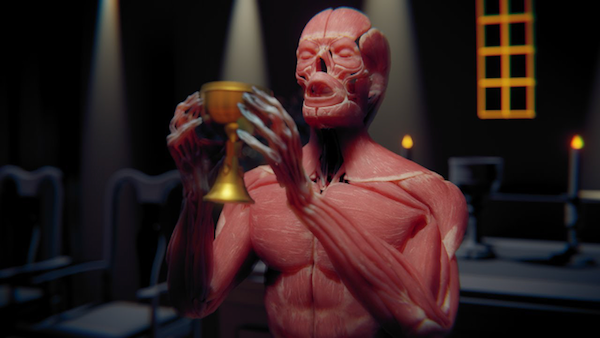Movie review by Greg Carlson
Rodney Ascher’s previous two nonfiction features, “Room 237” and “The Nightmare,” played out like the cinematic equivalent of staying up late with friends to swap scary stories, conspiracy theories, and the kind of half-remembered word-of-mouth urban legends that have only grown more potent in the internet age. The filmmaker’s new movie premiered at Sundance last week and debuts online today. “A Glitch in the Matrix” makes a fine addition to Ascher’s filmography, placing simulation theory on the shelf next to sleep paralysis and an obsession over the “hidden meanings” in Stanley Kubrick’s “The Shining.”
The most wide-ranging and expansive of the trio, “A Glitch in the Matrix” juggles a variety of bold pronouncements (reinforced by the likes of Elon Musk and Neil deGrasse Tyson) related to the idea that our experience is but an illusion, a mirage, a kind of constructed environment controlled by some superior or artificial intelligence. Popularized in its present incarnation by Swedish-born Oxford philosopher Nick Bostrom, who appears in the movie, the argument that nothing is real serves as a springboard for Ascher to hear from true believers.
The onscreen presence of several subjects — a Harvard-educated engineer, a clergyman’s son, a teacher and artist — is intensified by Ascher’s decision to retain voices but upgrade visuals using motion capture animation and Fortnite-esque 3D avatars designed by Chris Burnham. We quickly grow accustomed to the sight of the videogame-like characters communicating via Skype in their otherwise everyday home-computing environments. Better-known figures, like mysticism and consciousness enthusiast Erik Davis and graphic fiction superstar Chris Ware, appear with no digital enhancements.
The backbone of “A Glitch in the Matrix” is not the influential science fiction blockbuster (which still receives plenty of Ascher’s attention), but the thoughts and writings of Philip K. Dick. The cult novelist and short story wizard — whose books have been adapted into “Blade Runner,” “Total Recall,” “Minority Report,” “A Scanner Darkly,” and “The Man in the High Castle” — delivered a 1977 address to an audience in France in which he shared in fascinating detail the reasons that convinced him he was living in a simulation. The various “clues,” often contained within the kinds of “meaningful coincidences” associated with Jungian synchronicity, become a common feature of simulation hypothesis adherents.
The most divisive structural choice Ascher makes is contained within the lengthy sequence in which Joshua Cooke, speaking to the director via phone from prison, recounts the night he killed his parents. Despite Cooke’s stated desire to help others avoid his fate, the so-called “Matrix Murderer” consumes far too much attention and the segment fails to transcend its true-crime, cautionary tale aura. The movie would have been much better off giving more time and space to Emily Pothast, who does not believe that we are trapped in a simulation.
Accompanied by clips from Sam Weiss’s classic short animation “The Cave,” narrated to perfection by Orson Welles, Pothast discusses the Allegory of the Cave and emerges as the movie’s strongest critical voice/voice of reason. Offering some tantalizing commentary on the erotic, Pothast proposes that (as she puts it in a post on her involvement with “A Glitch in the Matrix” published for “Medium”) “intimacy — that is, attending to the subjectivity of the other — is the antidote to solipsism.” No glitch in that thought.
